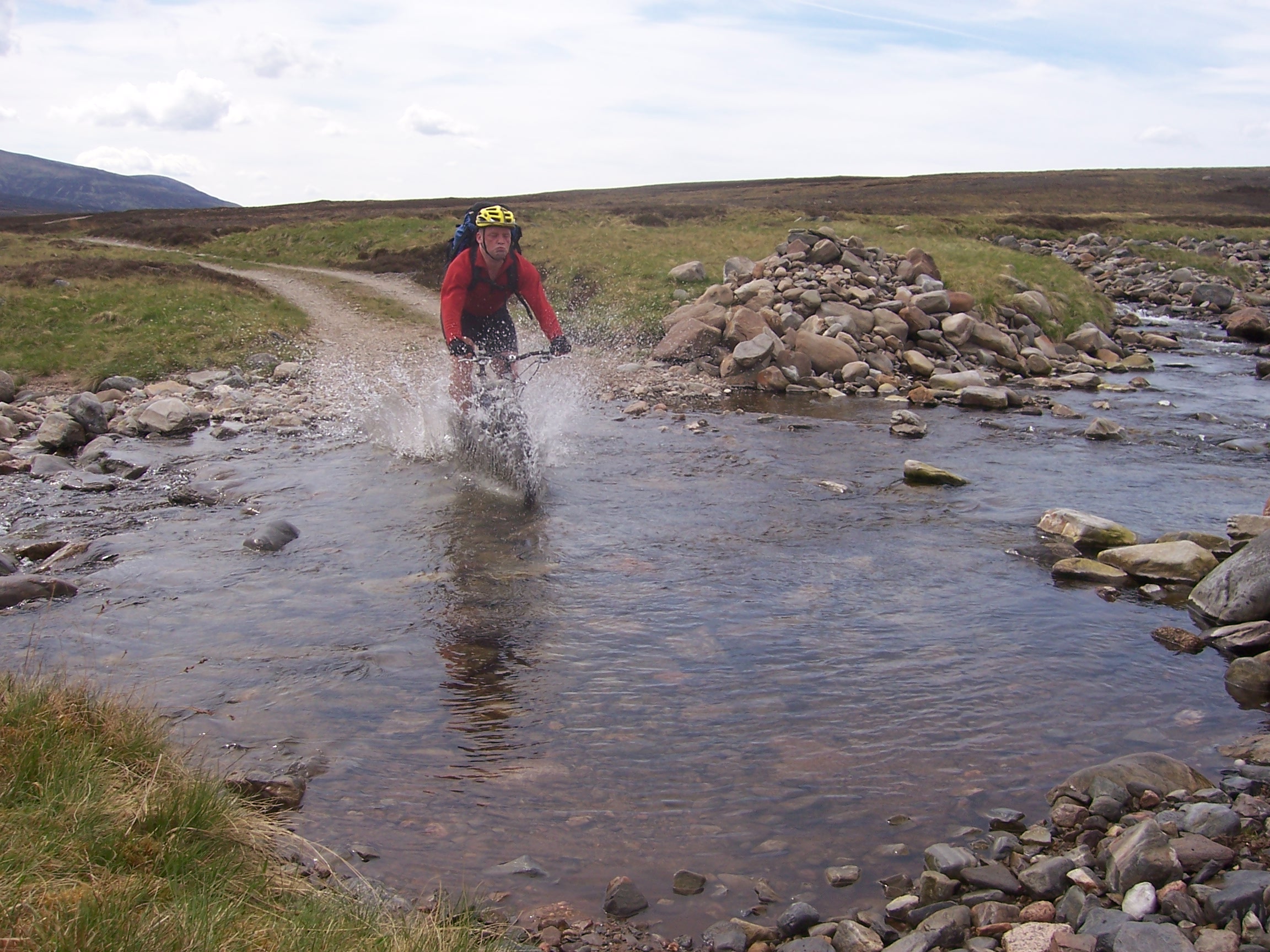Home › Forums › Chat Forum › Bridleways – Who maintains them? Especially when they cross a river..
- This topic has 21 replies, 15 voices, and was last updated 10 years ago by matt_outandabout.
-
Bridleways – Who maintains them? Especially when they cross a river..
-
dan2406Full MemberPosted 10 years ago
Ok bit of a long shot this one..
I tend to ride a local bridalway that crosses a few fields and then reaches a river crossing (a ford to be precise). This is a small off shoot from the thames in Oxon. My query is that for most months of the year this is barely passable as the river through the ford is too high to bike through.Easy in the summer months as its only a few inches deep, even some months when its higher its still rideable.
But who would i need to write to to see if they could build a bridge? Do they have to by law? Not only would it benefit bikers but also walkers etc. Any help appreciated.
smokey_joFull MemberPosted 10 years agofirst port of call should always be your local Rights of Way officer. If there’s any history or future plans to the crossing they are likely to know about it.
MrWoppitFree MemberPosted 10 years agoWell, I typed “maintenance of bridleways in oxfordshire” and this:
http://www.oalc.org.uk/documents/OxfordshireParishGuidetoCountrysideAccess.pdf
came top of the list.
Marvellous, this interwebs thingy. Isn’t it.
konagirlFree MemberPosted 10 years agoDo they have to by law?
No. Landowners are required to maintain access on public rights of way (i.e. ensure it does not become obstructed) but the local Council and any other interested parties such as National Park Authorities tend to foot the bill for significant maintenance or upgrade works these days.
There are loads of public rights of way that don’t have a formal crossing over water, for example, stepping stones across a river or access routes across estuaries and so on. It is up to the user to determine when it is safe to cross.
You could write to your Rights of Way officer at your Council but I can’t imagine they would have the funds. There is also the issue of the bridge needing to meet minimum criteria so it wouldn’t exacerbate flooding, which can add substantial cost.
stumpyjonFull MemberPosted 10 years agoNo account needs to be taken of cyclists needs when it comes to bridleways, as long as it’s suitable for a horse then that’s fine.
CountZeroFull MemberPosted 10 years agoOn a bridleway? Sorry, a bridge ain’t gonna happen. Cost and issues to do with how the footings at either end might obstruct the flow of water mean they’ll listen quietly, then laugh out loud and shake their heads as soon as you leave.
johndohFree MemberPosted 10 years agointerwebs
What’s that then, some kind of a global computer network providing a variety of information and communication facilities, consisting of interconnected networks using standardized communication protocols?
Ain’t ever going to happen.
ninfanFree MemberPosted 10 years agoSchnor would be your man on this – Bridge/ford law is a complex section of ROW law – but essentially there cannot be a duty for a local authority or landowner to create a bridge where there was not one before, I’m aware of cases where even where there was one before, the replacement has dragged on for decades.
However, there’s a duty on the local authority for the ford to be safely usable by the main class of users (ie horses or pedestrians) in normal conditions – this is where it can get messy
I would suggest contacting British Horse Society/local bridleway group and having a chat whth them – I would expect them to know it and have been arguing about it for years.
schnorFree MemberPosted 10 years agoAs ninfan says, the duty is only to maintain crossings / bridges / culverts / etc, not make a new crossing. Is there not an alternative way across? This is normally easier / cheaper to achieve, but needs a friendly landowner.
It’s a very tricky area. Firstly, as mentioned, ring your PRoW department and ask if there are any plans for a) a new crossing (doubtful) or b) an alternative (if there isn’t one). Maybe their ROWIP this year could stretch to something, but bridges are normally very expensive, especially BW bridges.
Depending on physically why the ford is impassible (e.g. erosion and the ford has ‘lowered’) you may be able to argue that the ‘highway is out of repair’ (not in the office to check, but I suspect it refers to existing structures), and as you say it’s navigable some of the time they could argue otherwise and say its just the weather.
Again, as ninfan mentioned your local BHS / horsey group will no doubt have been trying for years to get something done there.
I’m back in the office tommorrow and look into it a bit more during my lunch break (or possible earlier 😉 )
IanMunroFree MemberPosted 10 years agoThis one is still on my list of daft places to go on a bike.
http://www.walkingclub.org.uk/book_3/walk_166/molgripsFree MemberPosted 10 years agoIan.. interesting. They say it’s too long to walk, but I wonder if you could run it.
dan2406Full MemberPosted 10 years agoThanks for the replies. Yet again it’s good to know you can always rely on you guys to give genuine feedback.
I will give the contacts in the web link a shot, but as expected would be a long shot. Cheers.schnorFree MemberPosted 10 years agoHaving looked into it further, other than the general powers to improve Highways under Section 62 of the Highways Act (1980), there is a small section hidden away which allows authorities to construct a (new) bridge (I’ve never done a ‘new’ bridge before, only replacing old ones). For works other than a new bridge, there is provision of works for protecting highways against hazards of nature which might be cheaper than a new bridge. Neither of these require landowner / occupier consent (although it’s always nice to have it). So, there is no reasonable reason for them to say “oh, we don’t have the powers to improve it”, other than it simply being too expensive, which is most likely why they’ve not done anything.
Of course, BW’s only need to be of a standard suitable for horses, but it it sounds like it isn’t really navigable for horses under normal circumstances. In order to argue that its an obstruction would be to see how often the ford isn’t navigable(e.g. 8 times you’ve tried in the last 12 months), as to meet the standard for an obstruction – even though the “public (does not have) free access over the whole of the highway” – it can only be an obstruction if its “purely temporary in nature” Seekings v Clarke (1961) i.e. not if a path floods / etc.
Ultimately there are powers that the general public have in order to rectify this (99.9% of the time I wouldn’t even suggest them), but Section 56 and Section 103a notices are very much a last resort. I’m not quite sure which notice would be the relevant one as it depends in the exact circumstances.
So, as others have already advised it’s best to a) Ring your RoW Department, then b) Ring your BHS / horsey group. Hope this helps!
edlongFree MemberPosted 10 years agoMy query is that for most months of the year this is barely passable as the river through the ford is too high to bike through.
….
Of course, BW’s only need to be of a standard suitable for horses, but it it sounds like it isn’t really navigable for horses under normal circumstances
Have you compared the ground clearance on a mountain bike to that of a horse lately?
ninfanFree MemberPosted 10 years agoThe BHS guidelines are 0.5m deep in normal conditions, level and free from obstructions or ‘shelves’
Fording anything much over that would be of dubious safety if there was much of a current, with or without a horse – too many people get killed doing that. (and yes, I’ve forded well over that myself)
Schnor – You’re think you’re probably right about the expense element, I know of one of Alan Kind’s cases up in Northumberland that was very much tied up in ‘its cheaper to extinguish the bridleway than fix the ford’ that got killed by PINS – one thing occurs to me is that there ought to be a duty of care argument on ROW departments given the pretty extreme risks involved in river fording, I wonder if there’s an alternative approach that could be made on a health and safety basis?
As an aside, s103 Highways act says that an LA can place depth markers where they feel its appropriate, I’ve seen loads on water splashes/road fords, but hardly ever on a bridleway ford – I reckon that should be a bare minimum.
schnorFree MemberPosted 10 years agoHave you compared the ground clearance on a mountain bike to that of a horse lately?
In addition to the advisory standard of 0.5 depth, my point was that generally – and certainly in my experience – if a feature is such that MTB’s can’t pass through / over / around it, horse riders tend to not pass through / over / around it either. I’ve been called out to investigate ”urgent / dangerous / it’ll be a baby robins face if you dont do anything about it” rock steps ~12″ high, mud ~4″ deep, etc, that when I rode them didn’t really give them another thought.
I remember the case ninfan, Kind vs Northumberland, but not the specifics off hand. I totally agree with you, I’ve not got many fords myself (used to have a bad BW one ~0.5m deep and ~4m wide only doable from one side) but I’ve never crossed one here or elsewhere that didn’t give me the willies.
TBH between you me and the gatepost more and more decisions of mine – and colleagues elsewhere – are based on the old Elf N Safety rather than Highways / whatever law. Although of course a majority of RoW structures are the responsibility of the landowner and the duty of care rests with them, I replace stiles / install kissing gates / etc FOC anyway (it works out cheaper that way, and works are guaranteed, on time and to national standards), but more and more recently replace things which even 5 years ago would have left or bodged.
Maybe because there aren’t that many problem BW fords (100? as a complete guess, BTW) there hasn’t been a national movement to figure out what to do with them, so they’re dealt with on a case-by-case basis.
gwaelodFree MemberPosted 10 years ago. Have you compared the ground clearance on a mountain bike to that of a horse lately?
29ers must have the clearance of a sturdy hacking pony at least….surely
ninfanFree MemberPosted 10 years agoSometimes it can be beneficial of course – due to the right to divert to the nearest safe crossing
I recall the ROW officer in a certain North Yorkshire town getting most upset when I pointed out that the riders misusing the riverside footpath that happened to now be one of the favourite local MTB routes (Nidd gorge for those that know it) had a legal right to do so, since they were diverting to the nearest safe crossing as the BW ford was out of repair 😀
CountZeroFull MemberPosted 10 years agoHave you compared the ground clearance on a mountain bike to that of a horse lately?
Depends entirely on the horse, of course…
 matt_outandaboutFull MemberPosted 10 years ago
matt_outandaboutFull MemberPosted 10 years agoHow deep is ‘too deep to ride through’?
Just hit it flat out and close your eyes…
 C2C2006030 by matt_outandabout[/url], on Flickr
C2C2006030 by matt_outandabout[/url], on Flickr
The topic ‘Bridleways – Who maintains them? Especially when they cross a river..’ is closed to new replies.
